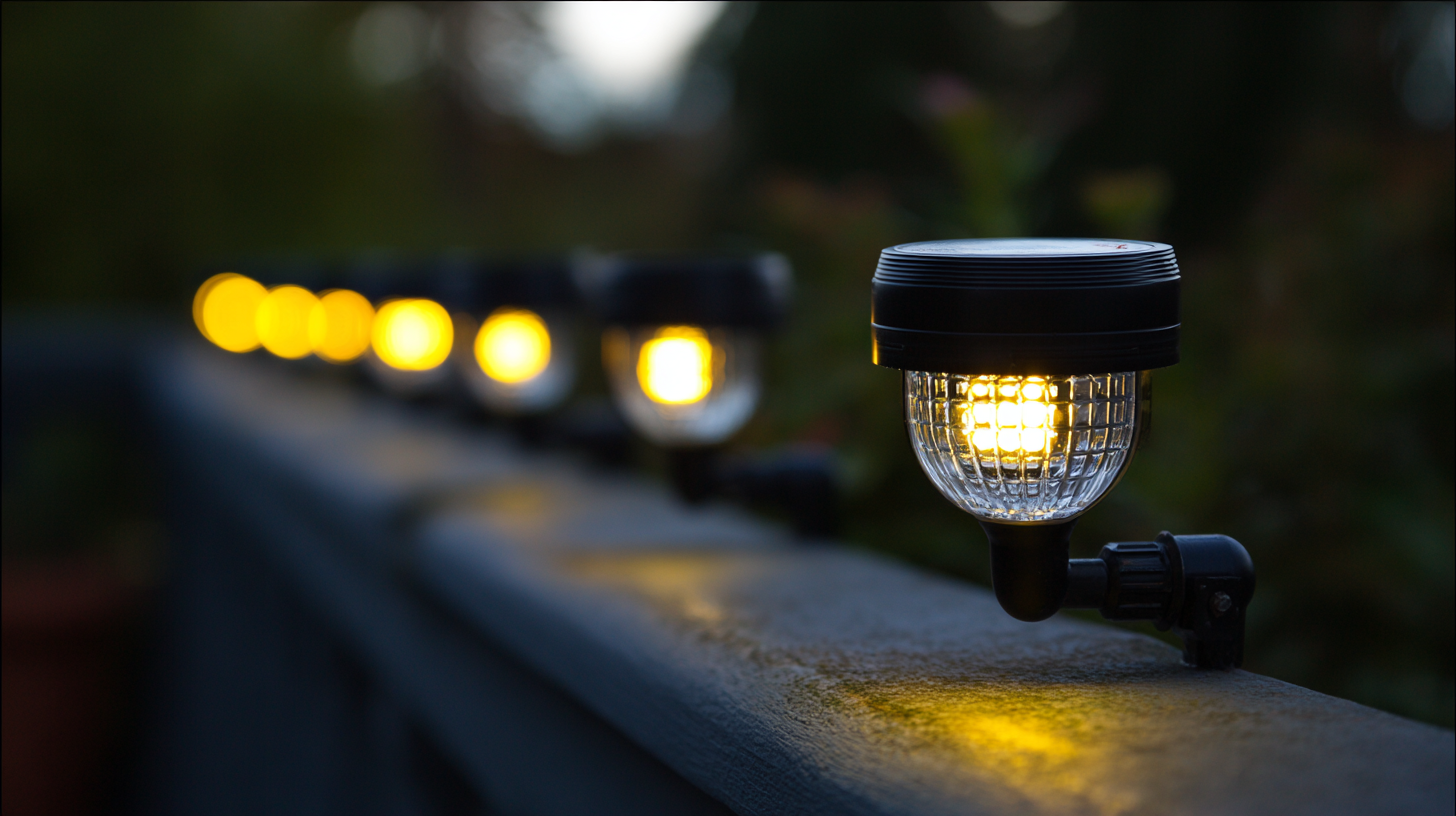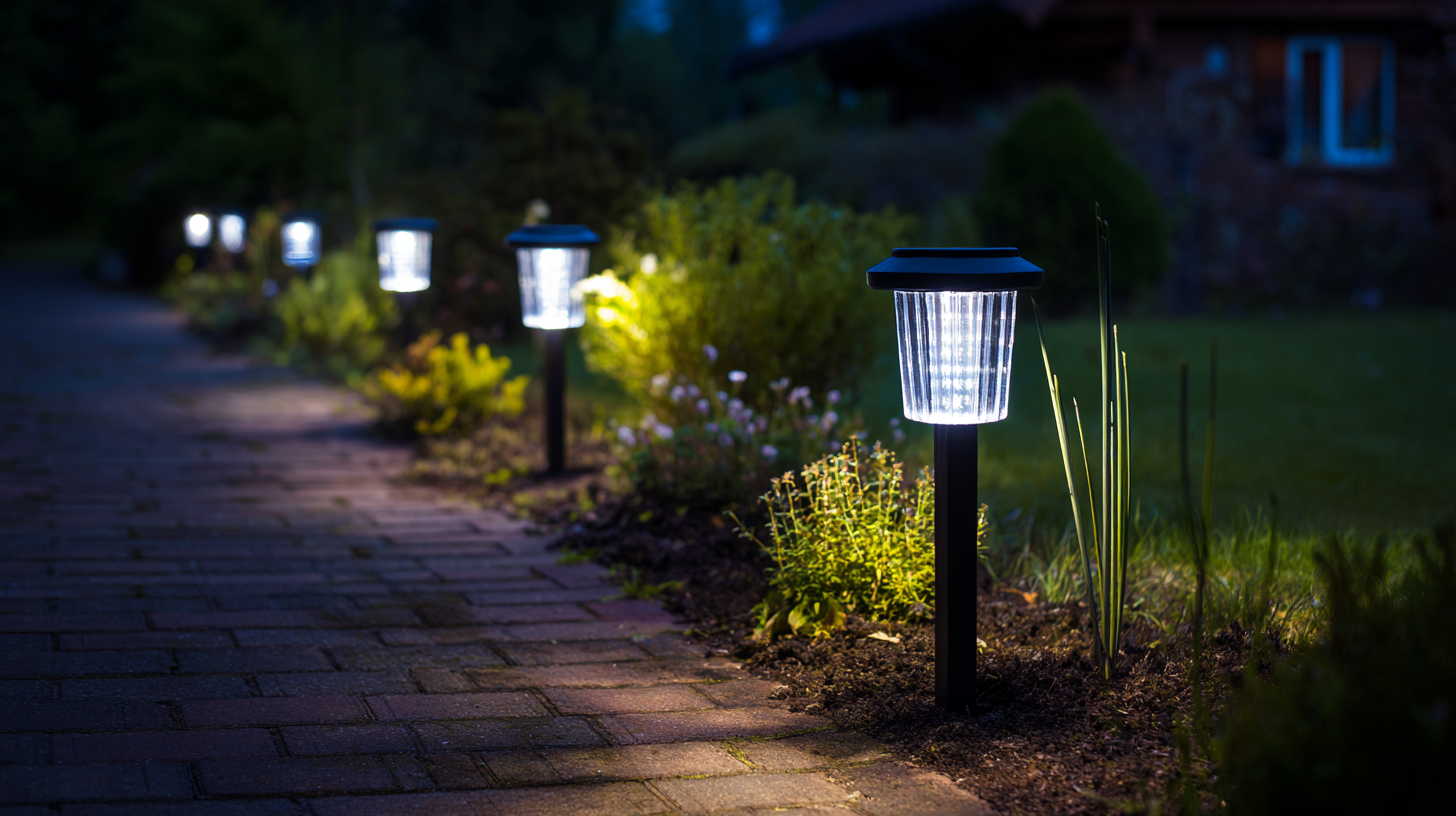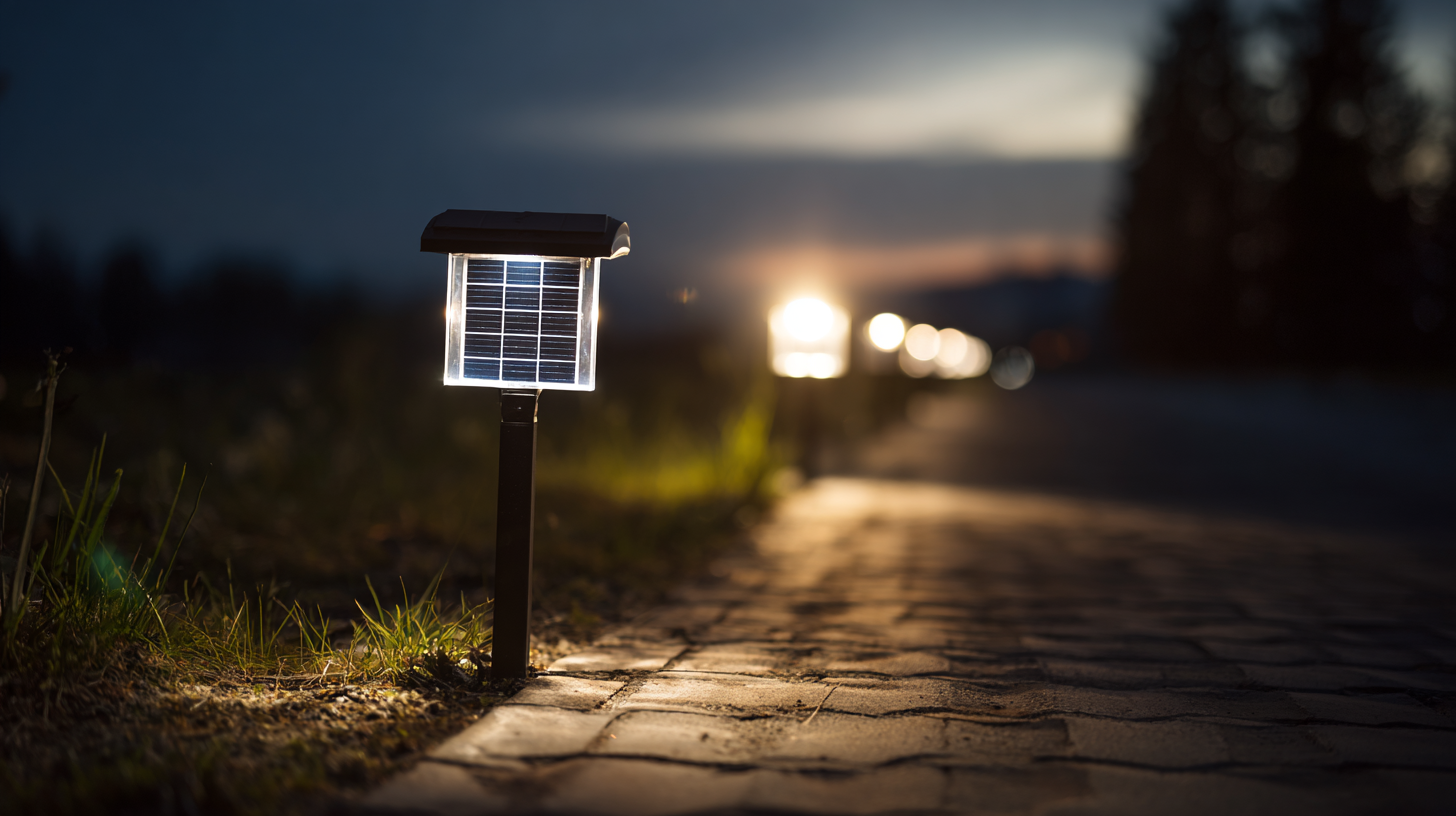Understanding Issues with Best Led Solar Lights Outdoor for Global Buyers
As global buyers seek effective and sustainable solutions for outdoor lighting, "led solar lights outdoor" have emerged as a popular choice. These innovative products harness solar energy to illuminate gardens, patios, and walkways, offering an eco-friendly alternative to traditional lighting sources. However, many consumers encounter challenges when selecting the best options on the market, ranging from varying quality and performance to confusion over features and specifications. In this blog, we will delve into the common issues faced by global buyers when navigating the landscape of led solar lights outdoor, providing insights and practical solutions to help you make informed purchasing decisions. By understanding these critical aspects, you can enhance your outdoor spaces while contributing to a greener planet.
Key Factors to Consider When Selecting Best LED Solar Lights for Outdoor Use
When selecting the best LED solar lights for outdoor use, there are several key factors that buyers should consider to ensure they make an informed purchase. First and foremost, it's essential to evaluate the brightness and luminosity of the lights. Measured in lumens, a higher lumen count indicates brighter light, which is crucial for areas that require adequate illumination for safety and security. Buyers should determine the intended use—whether for decorative purposes, pathway lighting, or security—to select the appropriate brightness level.
Another significant aspect to consider is the battery life and solar panel efficiency. A high-quality solar panel will charge more effectively during the day, leading to longer battery life at night. It's crucial to look for LED solar lights with rechargeable batteries that can hold a charge over successive nights. Additionally, the material and durability of the lights should not be overlooked. Choosing products with weather-resistant or waterproof features will ensure longevity, allowing the lights to withstand harsh outdoor conditions while maintaining performance. By focusing on these factors, global buyers can find LED solar lights that not only brighten their outdoor spaces but also stand the test of time.
Understanding the Impact of Lumen Output on Solar Light Efficiency
When selecting solar lights for outdoor use, a critical factor is the lumen output, which directly impacts the efficiency and effectiveness of the lighting solution.
Lumen output refers to the total amount of visible light emitted by a source. According to the U.S. Department of Energy, proper lumen levels are essential for providing adequate illumination for pathways, gardens, and security purposes, with recommended output ranging from 100 to 800 lumens depending on the application. High-quality solar lights typically deliver between 200 to 600 lumens, striking a balance between brightness and energy efficiency.
Furthermore, the relationship between lumen output and solar panel efficiency cannot be overlooked. A study by the National Renewable Energy Laboratory indicates that solar panel efficiency has improved significantly, reaching approximately 22% in premium products. This efficiency means that solar lights can harness more sunlight, converting it into higher lumen output. Buyers seeking outdoor solar lights should aim for models with both high lumen ratings and efficient solar panels to ensure adequate brightness while utilizing renewable energy sources effectively. Understanding these metrics allows global consumers to make informed choices that align with sustainability goals and their specific lighting needs.
A Comprehensive Guide to Solar Panel Types Used in Outdoor Lighting
When choosing the best LED solar lights for outdoor use,
it's crucial to understand the various types of solar panels available and their respective advantages.
The two primary types of solar panels utilized in outdoor lighting are monocrystalline
and polycrystalline panels.
Monocrystalline panels are known for their efficiency and performance,
as they are made from single-crystal silicon. This type of panel typically offers a higher power output
and can generate electricity even in low light conditions, making them an excellent option for areas with limited sunlight.
On the other hand, polycrystalline panels, composed of multiple silicon crystals,
are generally less expensive and easier to manufacture. While they may not be as efficient as monocrystalline panels,
they still provide reliable performance for outdoor lighting needs. Additionally, these panels tend to have a more eco-friendly manufacturing process,
which appeals to environmentally conscious consumers. Understanding the differences between these solar panel types can help
global buyers make informed decisions when selecting LED solar lights for their outdoor spaces.

Evaluating Weather Resistance Ratings for Outdoor LED Solar Lights
When choosing outdoor LED solar lights, understanding their weather resistance ratings is crucial for global buyers. These ratings indicate how well a device can withstand various environmental conditions, such as rain, snow, and extreme temperatures. According to a 2022 report by Energy Efficiency Global Forum, nearly 60% of outdoor solar lighting failures are attributed to inadequate weather resistance. Therefore, investing in lights with a high Ingress Protection (IP) rating, typically IP65 or higher, ensures they can resist dust and water, providing longer life and better performance.
Moreover, temperature resistance plays a vital role in the functionality of solar lights. Research by the Solar Energy Technologies Office reveals that solar lights optimized for higher temperature tolerances, specifically between -20°C to 40°C, maintain efficiency and reliability in diverse climates. Products tested for durability against UV exposure tend to exhibit minimal degradation, ensuring brighter illumination throughout their lifespan. By carefully evaluating weather resistance ratings, buyers can make informed decisions and select high-quality outdoor LED solar lights that withstand the test of time and elements.
Cost-Benefit Analysis: Installation and Maintenance of LED Solar Lights
When considering LED solar lights for outdoor use, a thorough cost-benefit analysis is essential for global buyers. The initial investment in LED solar lights can be higher than traditional lighting solutions; however, the long-term savings on electricity bills and maintenance costs can make them a more economical choice over time. Solar lights harness energy from the sun, which significantly reduces energy expenses and eliminates the need for wired setups. Moreover, the durability and longevity of LED technology mean that replacements are infrequent, translating to further savings and reduced waste.
Maintenance is another crucial factor to consider. LED solar lights generally require minimal upkeep compared to their conventional counterparts. Many models are equipped with efficient battery systems, and regular cleaning of the solar panels ensures optimal performance. Buyers should factor in the natural decline in battery efficiency over time, but with proper care and occasional replacements, these lights can function well for several years. This combination of low operational costs and minimal maintenance requirements makes LED solar lights a compelling option for those looking to improve outdoor lighting sustainably.



